Dogs without tails are termed to have natural bobtails where the animal’s tail grows unusually short or is missing completely because of a mutated dominant or recessive gene. Most of these dogs with a bobbed tail are born without tails and they even grow without tails.
The most common dog breeds without tails include the Pembroke Welsh Corgi, Brittany Spaniel, Croatian Sheepdog, Austrian Pinscher, Braque du Bourbonnais, and the Spanish dog. Obviously, there are many more breeds with a natural bobtail.
Read on to find out more about these pups, plus the science behind them being tailless. All these plus much more in the subsections below.
Brittany Spaniel
Brittany Spaniels are one of the most prevalent dogs born with a very short tail. Others may be born with longer tails, but it’s unlikely. In some cases, however, there are those born without a tail at all.
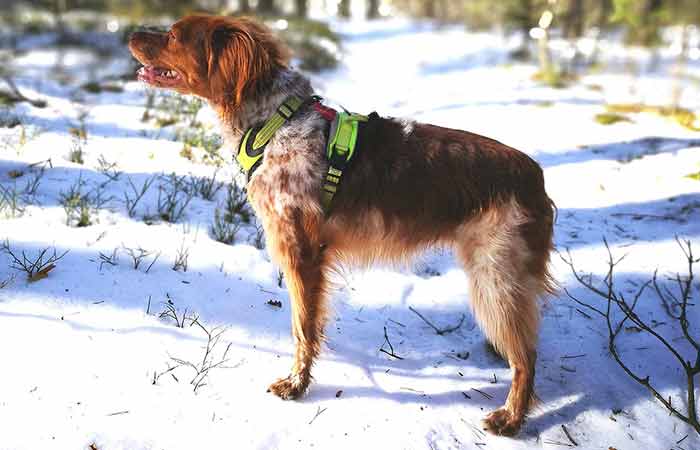
Their short tail has the advantage of allowing the dog to hunt freely without their tails getting pricked or stuck somewhere. Historically, they were bred as gun dogs, great for sports, and even better hunters. The Brittany Spaniel from the France Brittany province will continue to be one of the best gun dogs there are.
Braque du Bourbonnais
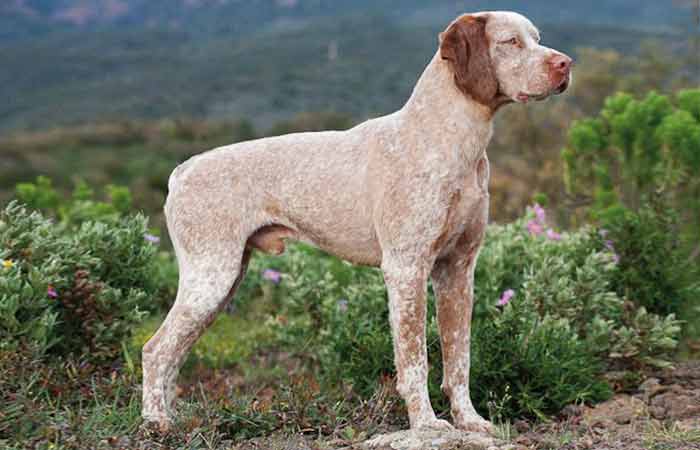
Next up is the Braque du Bourbonnais also from France. They have a natural bobtail which is also why they’re referred to as the “short-tail pointer”. The Bourbonnais Pointer also has fascinating colors such as peach blossoms, faded lilac, and fawn.
Pembroke Welsh Corgi
The Pembroke Welsh Corgi from the Pembrokeshire in Wales also had the natural bobtail for sometime back in the day. Being cattle herders, their short tail allows one to differentiate then and the cattle since it’s very likely for the dog to get lost between the cattle.
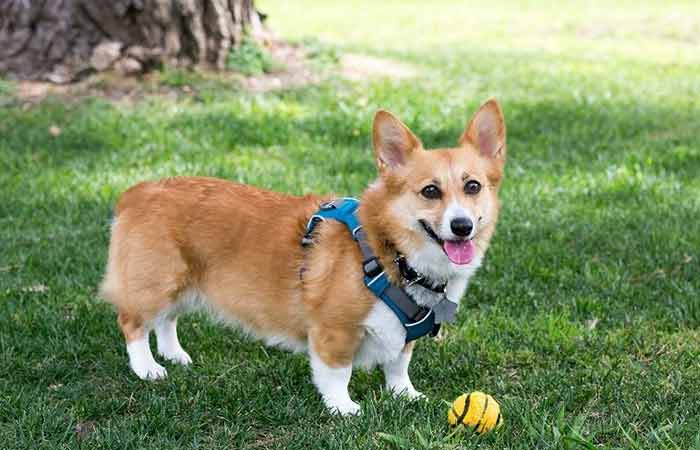
After years, the Corgi began to grow longer tails of over two inches long, which meant they had to have their tails docked. Unfortunately, this only went on for too long as the practice of tail docking was banned in the UK. Now the breed is simply classified as vulnerable in the UK.
Brazilian Terrier
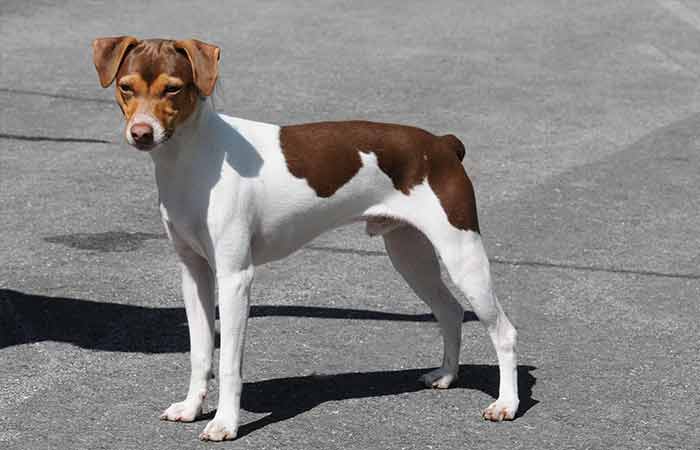
The Brazilian Terrier is a descendant of the Jack Russel Terrier and the Fox Terrier, which explains why the dog cab either have long to non-existent tails.
This wee tri-colored dog is also one of the breeds that have been subjected to tail docking as a breed standard, but that only occurs to those born with a tail.
Croatian Sheepdog
The story behind a natural bobtail from a Croatian Sheepdog began when the breed was originally subjected to docking. The breed had a long and curly tail which was then removed as a breed standard.
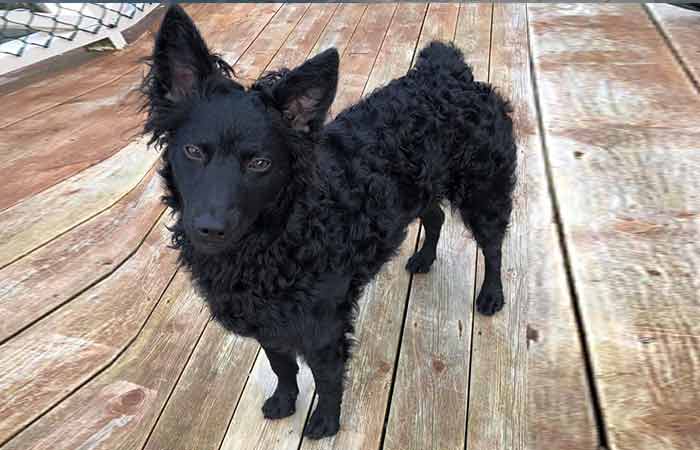
After some years, Croatia just as the UK banned the practice which forced breeders to look for other ways for the breed to acquire short or no tails. That’s how the Croatian Sheepdog now has a bobtail, through selective breeding.
French Bulldog
The French Bulldog is the perfect example of a dog with a natural stump tail, less than an inch long. The tail is said to only cover the anus which then qualifies the dog to have a natural bobtail.
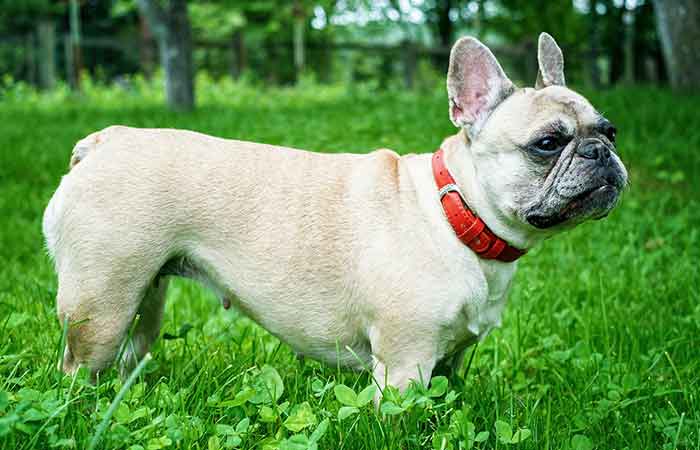
For the longest time, French Bulldogs were used for ratting hence having a short tail was more of a breed standard than the norm. This is why other breeders still indulge in selective breeding. This descendant of the English Bulldog, they are fun-loving, patient, and sweet companion dogs. Very protective of their owners and family and an excellent watchdog.
Boston Terrier
Yet another Terrier is the Boston Terrier. This is a crossbreed between the English Bulldog and the white English Terrier. They have a natural bobtail thanks to the English Bulldog. However, there are several Boston Terriers that have long tails.
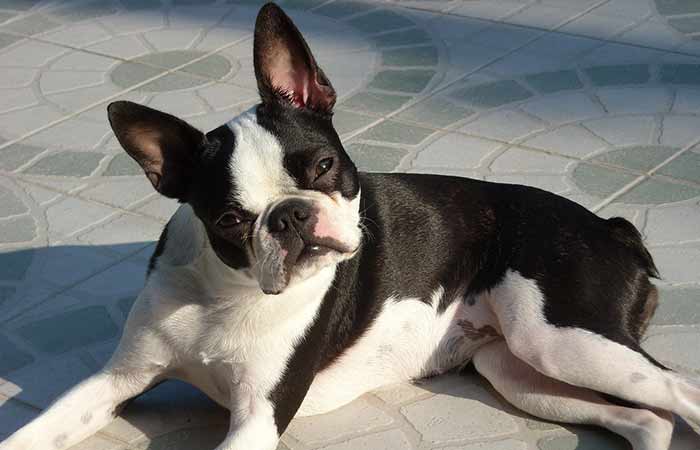
Those with long tails nonetheless can’t be registered as such because they’re said to have a nub(short stumpy tail) as a standard characteristic.
Boston Terriers are the American gentlemen, very friendly, outgoing, loyal, and are always eager to please. They have an incredible personality and ae quite intelligent, which makes them easy to train. They too can be watchdogs.
English Bulldog
The English Bulldog presents standard characteristics of a Bulldog which entails a short straight or screwed tail that’s very very short. In some cases, however, there can be those born with longer tails, but that’s not desirable according to the breed’s standards.
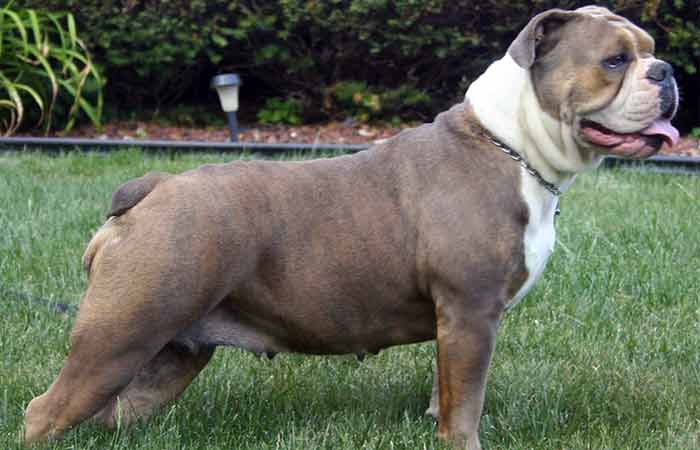
Bulldogs are excellent family dogs with all the desirable characteristics. Loving, sweet, friendly, patient, loyal, and protective. With such an outstanding personality, they too can be very stubborn in nature. They are family-friendly as precisely with children and other pets.
Australian Stumpy Tail Cattle Dog
As you would guess from its name, the Australian Stumpy Tail Cattle Dog has a very short stumpy tail measuring just four inches or less. The perfect definition of a stumpy tail. Unlike the Australian Cattle Dog, this stumpy type is better suited to working with the herd cattle.
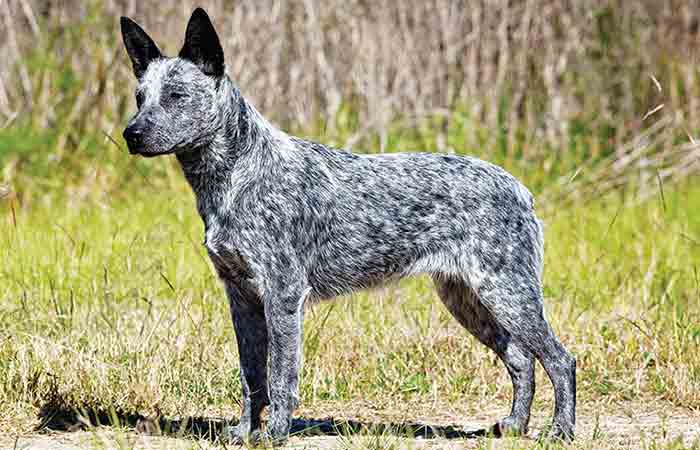
Officially bred in Canada and Australia, they are better suited to withstand harsh weather conditions and environments than its counterpart. Their short tails allow them to work better at herding livestock as they can easily get past them without having to worry about their tails. This medium-sized herding dog has very high energy, very alert, loyal, devoted, and watchful.
Miniature Schnauzer
Last, but not least, is this miniature schnauzer which greatly resembles the Croatian Sheepdog. Schnauzers are naturally born with a long tail but there are other types born with a bobbed tail thanks to the natural mutation of the T-gene. This allows even breeders to conduct selective breeding on the dog.
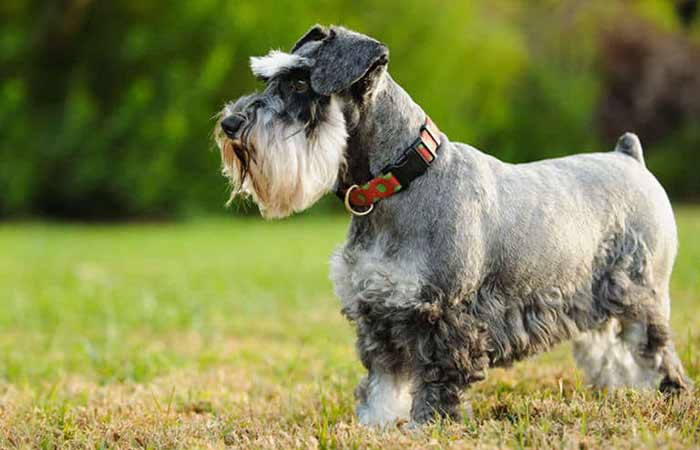
Schnauzers work as farm dogs which meant they had to have short tails or they risk being docked. Fortunately, crossbreeding and selective breeding have reduced the rate of tail docking done to these Schnauzers. Being part of the terrier family group, they exhibit incredible character traits such as a friendly and caring personality, loyalty, love, and alertness.
They can be easily trained, always eager to please, obedient, and a great protector. The Schnauzer is a very active dog that’s very versatile in its ways
Tailless Dogs types
Dogs without a tail are said to possess a mutated gene that causes them to have uniquely short or missing tails. There are two types of natural bobtail dogs with and without the C189G mutation.
Natural Bobtail Dog Breeds with C189G Mutation
- Australian Shepherd
- Austrian Pinscher
- Australian Stumpy Tail Cattle Dog
- Braque du Bourbonnais (Bourbonnais Pointer)
- Braque Francais (Savoy Sheepdog)
- Brazilian Terrier
- Brittany Spaniel
- Croatian Sheepdog
- Danish–Swedish Farmdog
- Donggyeongi
- English Shepherd
- Jack Russell Terrier
- Karelian Bear Dog
- Mudi
- Pembroke Welsh Corgi
- Polish Lowland Sheepdog
- Pyrenean Shepherd
- Schipperke
- Spanish Water Dog
- Swedish Vallhund
Natural Bobtail Dog Breeds without C189G Mutation
- Boston Terrier
- English Bulldog
- King Charles Spaniel
- Miniature Schnauzer
- Parson Russell Terrier
- Rottweiler
There are certain dog breeds claimed to have bobtails while they have short tails also called a nub or stumpy tails. These are tails no longer than four inches and, in some cases, that means they in fact have a tail.
Science Behind Tailless Dogs
Natural bobtailed dogs are discovered to have an ancestral T-box gene mutation (C189G), which makes the tail grow only to about an inch long as you see with the French Bulldog and the Pembroke Welsh Corgi.
However, there are cases of dogs with a short bobtail without the T-box gene mutation. According to studies published in the journal of heredity back in 2008, dogs are said to differ in morphological characteristics which include their tails and bones.
As for their tail phenotypes, the short-tailed dogs are said to increase vehemently over the years but it’s not all caused by the mutation located in the T-box transcription factor T gene (C189G).
According to the studies, this particular gene factor was presently seen in only a few breeds such as the Pembroke Welsh Corgis and bulldog. During investigations, researchers looked into multiple breeds in which were said to have a natural bobtail. Out of 23 breeds, only 17 had the C189G mutation which contributed to the short-tail phenotype. The remaining six breeds indicated that there must be yet other genetic factors affecting tail phenotypes to be discovered.
Upon further studies, it was revealed that multiple short-tailed dogs born from long-tailed parents in some breeds such as the BostonTerrier, had other patterns of inheritance or a variation in penetrance.
The T-box gene mutation was investigated to look into its possible ancestral origin and to identify whether other genetic causes exist in association with short tails. The study revealed that the T-gene could decrease during embryogenesis causing the gene not to transfer completely from parent to offspring.
Other factors were researched to explain the short tails in breeds such as the Miniature Schnauzers. However, the study was inconclusive as there were no segregated phenotypes that indicated a standard mutation.
This only brought the study into one conclusion, other genetic factors could be affecting and regulating the length of the tail.
Pros of Short Tail/Tailless Dogs
- Short and stumpy tails in gundog breeds aided them during their hunting games. It allowed the breeds to easily penetrate heavy vegetation and thick brambles without their tail getting caught up. A dog’s tail has many nerve receptors which means injuring their tails causes immense pain.
- Other dog breeds were docked to resemble bobtail breed because they hunted better. They could easily fit in confined spaces such as the Terriers as they go through tunnels.
- A bobtail on a dog means less likely to injure their tails at home.
- A bobtail also means the area around their anus is clean and scent-free. A short tail also allows for easy grooming and washing. No hygiene problems or infestations by maggots.
Cons
- The biggest disadvantage of a bobtail on a dog is the lack of communication. Being able to speak to its owners and other dogs is a large constraint as it limits the dogs. Breeds such as the boxer that get their tails docked for beauty purposes miss out on the ability to play around and communicate with other dogs.
- The dog could easily get aggressive. Because the dog can communicate, they can easily get annoyed, frustrated, and upset by the fact they don’t have social cues. If you can’t handle such scenarios, then a bobtail breed isn’t the finest choice for you.
- Their bobtail means their unable to stimulate their rear muscles found in their bottom and legs. This, therefore, means they may have issues sitting, walking, or even swimming. Some breeds with docked tails could even have problems going to the washroom or exercising.
Are Rottweilers Born without Tails?
Yes, quite a number of Rottweilers have bobbed tails; they’re naturally born without a tail. However, a large number of Rottweilers are actually born with full tails.
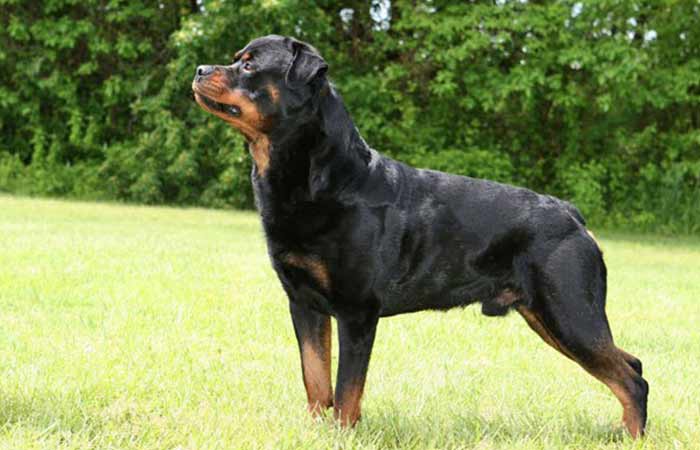
After some time, say two to five days after birth, their tails undergo docking, a medical procedure that sees the tail removed for multiple reasons.
Tail docking is more common with Rottweilers as it’s very rare for one to be born with a bobbed tail unless there was some form of crossbreeding.






